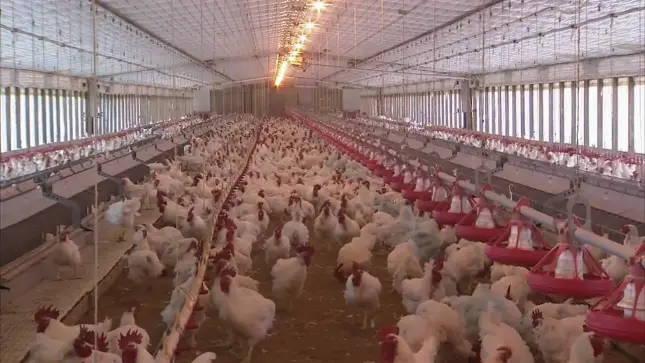Medically reviewed and approved by a board-certified member

INTRODUCTION TO POULTRY
Rearing a variety of birds such as chicks, turkeys and ducks is referred to as poultry. Chicken forms the major poultry farming all over the world.
In Pakistan the poultry sector is playing an important role in bridging the gap between the supply and demand for protein. Commercial poultry farming started in Pakistan in the early 1960s and showed rapid growth over the decades. The early growth of this sector was the result of the promotional policies from the Government and the persistency of the poultry farming community. The Government considered the poultry production chain to be a crucial part of the food processing industry and gave special incentives to this sector, and hence the poultry sector was declared free of sales and income tax as well as exempt from import duties for a number of years. As a result, during the early 1970s, the sector saw 20–30% growth per annum, and continued to grow at a rate of 10–15% in the 1980s. The most important reason for this growth was a vibrant domestic market, due to which poultry meat consumption increased more than 4% per year.
In Pakistan, poultry production is one of the most dynamic and well organised sectors contributing 26.8%, 5.76% and 1.26% respectively to total meat production, agricultural sector and overall GDP. In the last few years, the poultry sector has shown excellent growth and has emerged as a source of employment for more than 1.5 million people (GOP, 2014).
The extraordinary progress of poultry farming in Pakistan is due to the following reasons.
- Poultry requires less investment.
- It generates income in a short span of time.
- It provides work round the year.
- It can be started as a cottage industry.
- It produces good quality of animal proteins. (Nutrient value of egg is 13.3% of proteins; 13.3% of fats; 173 K. cal. of energy; 60 mg. of calcium; 220 mg. of phosphorus and some vitamins, iron efë. About 100 gms. of flesh of chicken consists of 26.0% proteins; 0.6% fats; 109 K. cal. of energy; 25mg. calcium and 245 mg. phosphorus).
- It can be started as a self employment scheme.
- The feed can be better utilised by poultry. As a result, less food consumption and better growth of poultry are realised.
- Poultry is also suitable for mixed farm conditions.
- Marketing facilities for the sale of poultry products are available.
The domestic fowl is allowed to move freely in open places in villages. These birds freely move and lay a few number of eggs. This is the only system normally practiced for growing chicks in villages for a longtime. However, this method is not proved to be economical. As an alternative to this, poultry farming is initiated.
POULTRY FARMING METHODS
Some important aspects are to be followed in poultry farming. They are (1) poultry housing and equipment (2) management of chicks - broilers and layers (3) poultry diseases (4) poultry products, marketing and economics. In poultry farming, the birds may be grown either by the semi intensive system or intensive system.
SEMI – INTENSIVE POULTRY FARMING SYSTEM
This system is adopted where the free space available is limited. A space of 20-30 square yards is to be allowed per each bird of outside run. Some times the birds may be allowed to move onto fresh ground.
POULTRY FARMING - INTENSIVE SYSTEM
In this method, proper care is to be taken to grow the chicken.
The intensive system is the common system employed in poultry farms. In this system, birds are grown freely in houses or cages arranged in tiers. Housing is meant for providing ideal conditions for the chicken so as to give efficient production.
- Comment
- Posted by Dayyal Dg.
End of the article